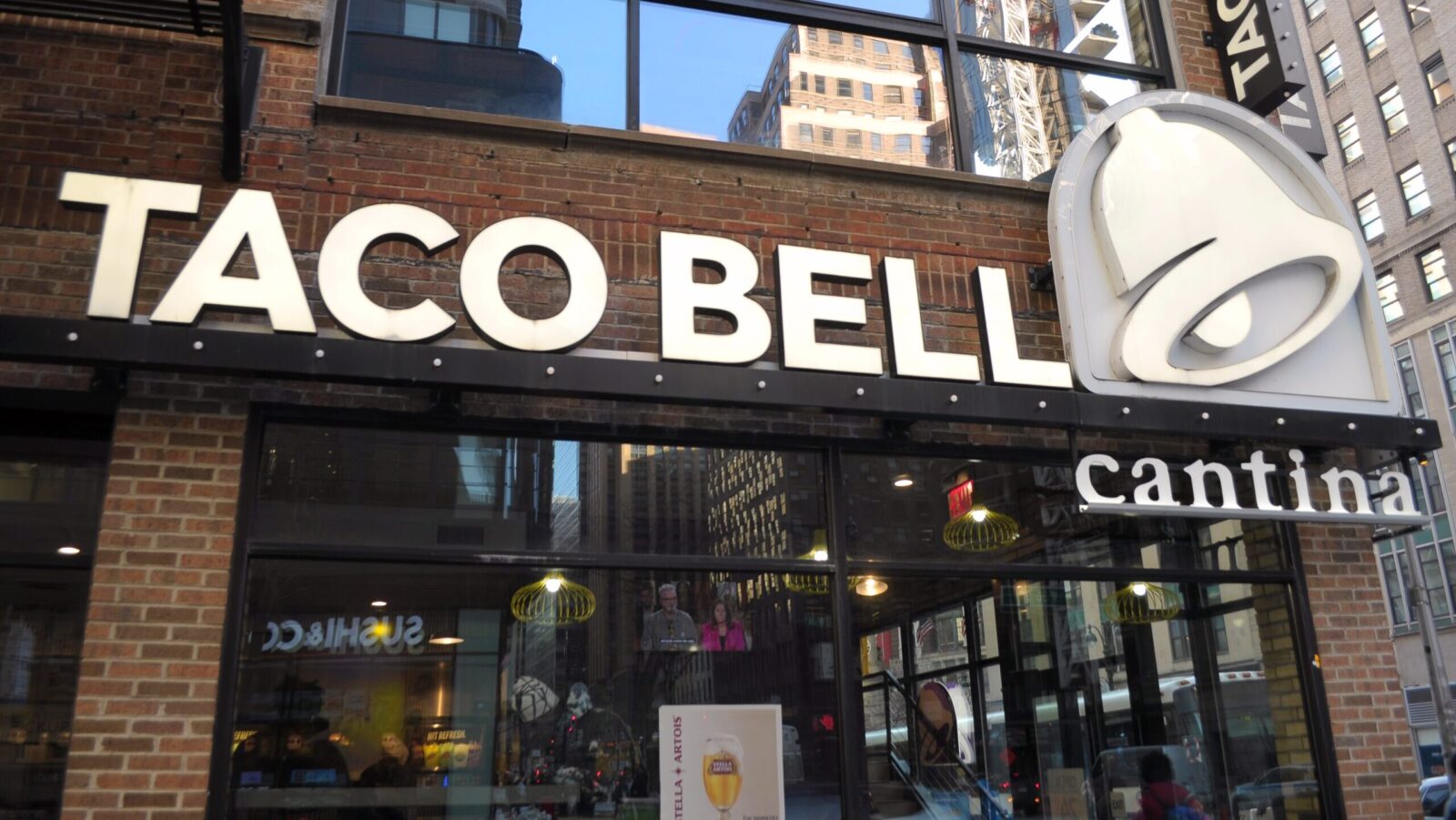Good morning, and happy Monday.
We’d like to chalk it off as human error, though at this point, we’re honestly not sure. In its livestream presentation debuting GPT-5 last week, OpenAI featured a handful of charts and graphs designed to show off the performance gains made by its latest artificial intelligence model. Eagle-eyed viewers, however, noticed that the numbers were more than a little bit off. CEO Sam Altman quickly copped to the “mega chart screw-up” in an X post, and noted that corrected versions were available on the company’s blog. He didn’t, however, identify who or what was behind the blunder. Given that one of the charts, ironically enough, miscommunicated GPT-5’s “deception” rates, we have our suspicions.
Earnings Show Fast-Food Giants Embroiled in a Game of Chicken

Where’s the beef? No one cares — show us to the poultry, please.
Last week delivered a bevvy of earnings reports from fast-food giants — including McDonald’s, Wendy’s, Yum! Brands, and Restaurant Brands International — with the results showing the industry’s biggest trend continues apace: Customers can’t get enough chicken, especially when offered at a discount.
Winner, Winner, Value Chicken Dinner
First things first: Amid a prolonged period of economic uncertainty, the value menu remains invaluable. But even a price war among the world’s biggest restaurant chains isn’t enough to keep low-income consumers coming through drive-throughs. Instead, they continue to flee fast food in favor of value grocery stores, R.J. Hottovy, head of analytical research at Placer.ai, told The Daily Upside. In what may be a macroeconomic bellwether, Hottovy also said low-income consumers are increasingly shifting down even from value grocery chains like Aldi to cheaper convenience stores and dollar stores.
Still, value remains a big driver. So much so that in its second-quarter earnings call on Friday, Wendy’s said a major driver of a sales decline (that still beat analysts’ expectations) was having too many promotions, which interim CEO Ken Cook said “sent too many different messages” to customers. “We learned that when we have too many priorities, we have none,” Cook added, before saying that Wendy’s will have one top priority through the rest of the year: chicken. (McDonald’s seemed to crack the code this past quarter, citing the return of its McCrispy Chicken Strips driving sales growth.)
For more evidence of chicken fever, look no further than Yum’s portfolio:
- True, not even chicken could save the colonel: Same-store sales at US Kentucky Fried Chicken locations slid 5%, as the chain continues to suffer amid increased competition from the likes of Raising Cane’s and Wingstop.
- But Taco Bell saw US same-store sales growth of 4%, with Yum citing a new line of Crispy Chicken menu items and the reintroduction of chicken nuggets. In fact, Yum CEO David Gibbs said Taco Bell’s chicken sales are up 50% in the past two years.
“Most people are reporting negative quarters. We haven’t even had a negative week for Taco Bell,” Gibbs said.
Extra Guac, Please: Pricier chains are facing the same pressures — and struggling. Shares of Sweetgreen plunged more than 25% on Friday after the chain lowered its profit guidance for the second consecutive quarter. Meanwhile, Chipotle experienced its second straight quarter of same-store sales declines, with CEO Scott Boatwright saying the chain needs to figure out how to “communicate value and showcase value.” Did you catch that, Chipotle employees? To our ears, it sounds like your CEO is practically begging you to give us a scoop of guacamole on the house.
Tax-Taming Strategies For Investors With $5M+

Managing significant wealth isn’t just about growth. It’s about ensuring you keep more of what you’ve earned. Luckily, Tax-Efficient Wealth Management for Affluent Investors features forward-looking advice to help strengthen and optimize your portfolio.
Inside, you’ll find actionable tax planning techniques and straightforward investment strategies for affluent retirees like you.
You’ll also find insights to help with your estate planning, so you can ensure your financial legacy is distributed according to your wishes while minimizing tax exposure.
Why let your savings get eaten by excess taxes? Discover how tax-taming strategies can help you stay on track and keep more of what’s yours.
Download Tax-Efficient Wealth Management for Affluent Investors today.
The $5 Trillion Question: Nvidia, Microsoft Vie for Record High Valuation
What’s bigger and better than $4 trillion? $4,000,000,000,000.01? Well, yes, that’s technically true, but it’s not very exciting or interesting. What’s symbolically bigger and better than $4 trillion? $5 trillion? There we go; now, we’re talking.
Last month, chipmaker Nvidia became the first company in the world to reach a market capitalization of $4 trillion. Currently valued at roughly $4.4 trillion, it achieved the landmark a little more than three years after tech giant Apple became the first $3 trillion company in 2022. Now, a seemingly two-horse race for the first-place $5 trillion trophy is underway.
Tale of the Market Tape
Temporarily joining Nvidia, which achieved the landmark on July 10, was Microsoft, which became the second member of the $4 trillion club on July 31 after blowing past earnings expectations. But it exited shortly thereafter, with shares softening enough to bring its market cap back down to $3.9 trillion as of Friday.
Anticipating that both companies would reach $4 trillion, Wedbush analysts wrote in June that they could reach the $5 trillion landmark in the next 18 months, noting the “tech bull market is still early, being led by the AI Revolution.” Both happen to be benefiting from overlapping tailwinds. Microsoft’s Azure is growing at breakneck speed as it has become the leading cloud platform for workplaces. The company’s cloud revenues for its latest fiscal year, which ended on July 31, rose 23% year-over-year to $168 billion. Meanwhile, the cloud computing surge that Microsoft has benefited from, of course, has increased the demand for computing hardware from chipmakers like Nvidia. Demand for hardware to support AI computing has, naturally, led to more promising growth in demand: All told, Nvidia predicted at its March technology conference in San Jose, capital expenditures on data centers will rise to $1 trillion by 2028 from $400 billion last year. As for who will hit $5 trillion with the wind in its sails first, the odds seem to favor the chipmaker:
- Microsoft does earn more money. Net income in its fiscal year ending June 30 was $101.8 billion. Nvidia’s net income for the 12 months ending April 30 was a lesser $76.8 billion — but this ultimately impressive haul was achieved as the United States revoked the company’s license to export to China. (Nvidia is poised to reenter the market after the Trump administration offered assurances last month that it will be granted licenses again.)
- Nvidia, meanwhile, is growing faster. In Microsoft’s latest quarter ending June 30, net income rose 24% year-over-year to $27 billion, and revenue climbed 18% to $76.4 billion. Nvidia’s net income in its latest quarter ending April 30 increased 26% to $18.7 billion, and revenue jumped 69% to $44 billion. And, again, it achieved that growth even with the ban on Chinese chip exports.
The Dark Horses: The only other companies with a current market cap above $2 trillion are Apple ($3.4 trillion), Google-owner Alphabet ($2.4 trillion) and Amazon ($2.4 trillion). But, unless Tim Cook rolls up to Apple’s next Worldwide Developers Conference with an iPhone that can teleport you to the French Riviera on your lunch break, these thoroughbreds are likely to remain dark horses.
Private Equity, Crypto Get Ready to Spice Up 401(k)s
Your 401(k) is almost certainly chock-full of meat-and-potatoes investments like stocks and bonds. An executive order from President Donald Trump last week might introduce some new dishes to the menu.
Trump’s move will open up alternative assets like private equity and cryptocurrency to retirement funds, a potential feast for the industries involved. But there’s no guarantee retirement fund administrators will rush to add those alternative assets to what they’re serving.
Freshmen Asset Class
Trump’s order instructs the Labor Department and other regulators to redefine what is considered a qualified asset in 401(k) retirement rules, allowing plans to invest in higher-risk alternative assets like PE, cryptocurrencies and real estate. Current federal rules deter most defined-contribution plans from investing in alternative assets, which is why they tend to prefer stocks and bonds. Any formal changes are probably still months away and, before assuming they usher in a sea change in investment strategy, it’s essential to look at one key piece of legislation.
The Employee Retirement Income Security Act, the law that governs pension plans, isn’t going anywhere. This is especially important because the law requires 401(k) plan administrators to act solely in the best interests of beneficiaries, which often translates to a sound investment strategy. The plans will no doubt think twice before rushing into private equity and crypto investments:
- As a relatively new asset class, cryptocurrency has exhibited significant volatility. For example, while Bitcoin has risen over time, it has experienced over eight corrections of more than 50% in its 17-year existence. Other digital assets have proven even more volatile.
- Private equity firms, meanwhile, typically charge relatively high management and performance fees and place restrictions on redemptions, which can eat into net returns. Longer investment horizons, which make private equity funds less liquid, may also conflict with some 401(k) administrators’ strategies. Finally, the sector has underperformed public markets for three of the past four years, reversing the common wisdom of the previous decade that they offered higher returns.
A Helping Hand: Crypto firms have been inundated with cash and interest from traditional Wall Street players this year. Access to 401(k)s, in whatever amount materializes, would be something of a cherry on top of the sundae at crypto’s coming-out party. The private equity sector, on the other hand, could really use the help. Private equity backers, which traditionally include pensions, university endowments, family offices, private foundations and sovereign wealth funds, have increasingly lowered or declined new commitments, with growing numbers opting to cash out from certain investments. Professionally managed 401(k) funds, which roughly 90 million Americans use, would open up a $9 trillion market to the sector, which could use financing beyond its traditional LPs, who have signaled they’re tapped out.
Extra Upside
- The New Guy: One of President Trump’s top aides, Council of Economic Advisers Chair Stephen Miran, will temporarily serve on the Federal Reserve’s Board of Governors to fill out the term of the departing Adriana Kugler, which lasts until the end of January 2026.
- Trading Places: Shares in digital advertising firm The Trade Desk, which reported better than expected results, fell a staggering 40% on Friday amid analysts’ concerns that Amazon is taking an increasingly major role in online ads.
- The Probiotic Strain Backed By Real Science. Akkermansia supports gut lining strength and may play a role in metabolic health. Pendulum delivers a potent live strain trusted by 16,000+ medical professionals. Give your gut the support it deserves: Join the Pendulum movement. Get 20% off your first membership order.*
* Partner
Just For Fun
Disclaimer
*Based on preclinical studies. Not intended for weight loss.

